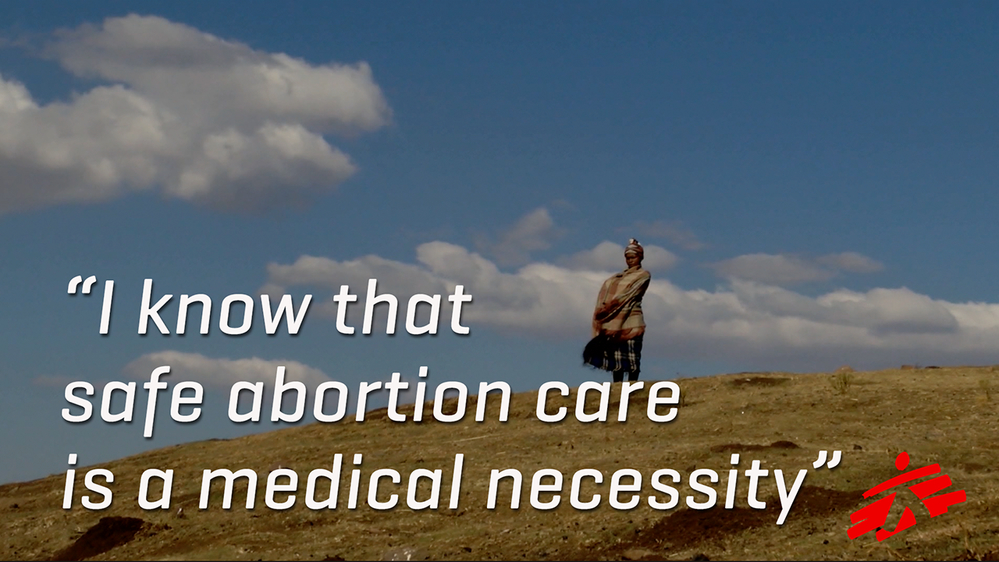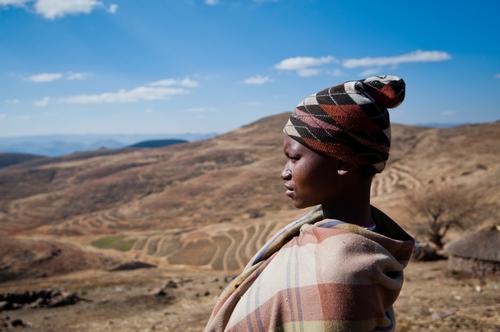Dr Manisha Kumar is a family medicine doctor and the coordinator of the Task Force for Safe Abortion Care, a project that aims to increase access to contraceptive and safe abortion care services offered by Médecins Sans Frontières (MSF) projects.
Before I started working at MSF field projects, I saw abortion as more of a political issue, or as an aspect of women’s rights. But now that I’ve seen women and girls in need of safe abortion, day after day, with my own eyes, I’ve come to understand abortion as a medical necessity, something that has a very real impact on people’s lives.
When I talk with my friends or colleagues here in the US, including other doctors and even abortion providers, it’s usually hard for them to understand what I’ve been confronted with and what MSF deals with every day in our projects all over the world.
Since abortion has become legal, safe, and—until recently—largely accessible throughout the US, we don’t see the complications from unsafe abortions here that we do in developing countries. So I try to help people understand by telling them about the women who are my patients.
Now that I’ve seen women and girls in need of safe abortion, day after day, with my own eyes, I’ve come to understand abortion as a medical necessity.Dr Manisha Kumar
My first experience working abroad was in Lesotho, a small country landlocked within South Africa, where I was a doctor on the maternity ward of a small hospital in the mountains. One day, an 18-year-old girl came in; she was very sick. She was in septic shock—her body was fully infected. She was in and out of consciousness with a really high fever. When we examined her, we found sticks and leaves inside her vagina.
It was immediately clear, first to the local staff and then to me, that these were the complications from an unsafe abortion that she’d tried to provoke at home.
We did everything to treat her. We put her on intravenous antibiotics and lots of IV fluids. It took days and days, and she finally recovered, but I remember sitting at her bedside and thinking that this was all so preventable and avoidable. It was the first time I’d been confronted with a young woman who just prior to this episode had been perfectly healthy, and now there she was in our hospital, so sick and so close to death.
Later, when I was on my first assignment with MSF in the Democratic Republic of Congo, I was in charge of the sexual and reproductive health activities for a pretty large project. I was managing the hospital’s maternity ward, and I saw women and girls who were just as sick as that girl in Lesotho. But now it was bed after bed after bed, all full with women with complications from unsafe abortions.
We were admitting 800 women every year with post-abortion complications at that project and it soon became clear to me that this is something that affects all kinds of women. There were girls and middle-aged women; married and unmarried; women with many children, women with two children, women with no children. The one thing they all had in common was that they’d each found themselves in a hospital bed because they’d had an unwanted pregnancy and, having no safe way to end the pregnancy, had resorted to unsafe means.
It seemed to me that these women were in the shadows. They were being treated by the staff, but no one was really talking about it, and no one seemed to be thinking about how they all got so sick in the first place.
I remember sitting at her bedside and thinking that this was all so preventable and avoidable.Dr Manisha Kumar

How I Became Passionate About Safe Abortion Care
I was honestly shocked by the number of women that we were treating for unsafe abortion, but for the most of our Congolese staff, this was something that they had grown accustomed to seeing and treating. It had become normalised, part of routine hospital care. When I would dig a little bit deeper, though, and ask a few more questions, it became apparent that many of the Congolese staff had personal stories to share. They had all been impacted by women in their lives who’d had complications from unsafe abortions—and many who had died as a result. Sometimes it was a story of a sister growing up, or a neighbour, or a classmate from nursing school. One staff even told me about his daughter who’d died from an unsafe abortion.
This experience opened my eyes to a whole world of suffering for women and girls that I had never known existed before. Suddenly, I was being confronted by it. These were my patients.
When I talk to people back home in the US about this, I remind them that we are only one or two generations removed from women seeking out unsafe abortions in this country. I’ve met doctors who were practising in the 1960s and 70s, before abortion was legalised here, and they tell me that same story of hospital wards being filled with bed after bed after bed of women with septic abortions, women who were bleeding and suffering the same types of complications that I’m seeing in DRC today.
I know, from what I’ve seen with my own eyes, that providing safe abortion care saves women’s lives.Dr Manisha Kumar
I’m proud to be working with MSF in providing access to safe abortion, treatment for unsafe abortion, and contraceptive care. It’s an honour for me to be able to fight every day for women and girls, to help them get the high-quality medical care they need. I know that we’re preventing maternal deaths and suffering.
People often associate MSF with lifesaving medical activities in times of war—the trauma surgery and other treatment of war-wounded people that we do—and I think that work is really important. But I also think that the work our field teams are doing to provide safe abortion care—even when it is risky to do so—is equally heroic, equally lifesaving, and just as much a part of MSF’s mission. I know, from what I’ve seen with my own eyes, that providing safe abortion care saves women’s lives.






